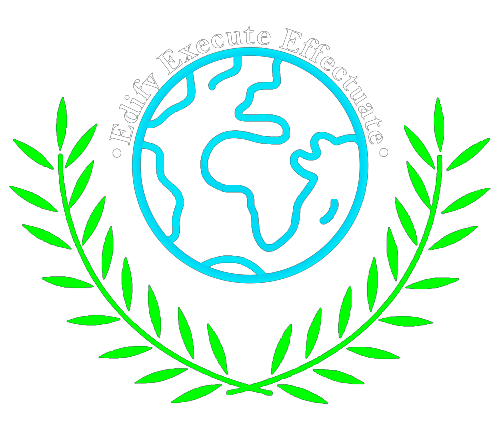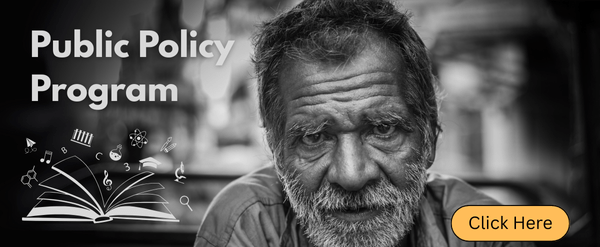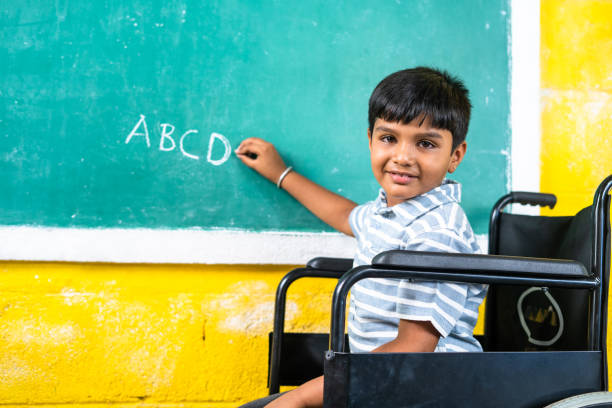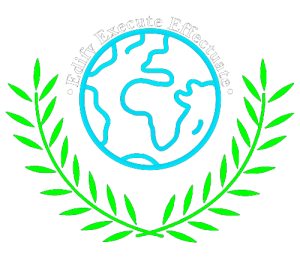By Megha Agarwal
Abstract: Inclusive education is empowering the potential of holistic development in every child. It tries to interlink India’s education system with UN SDG Goal 4: Ensure inclusive and equitable quality education and prompt lifelong learning opportunities for all. It shed light on differently abled children’s needs and laid down emphasis on quality learning via constructive curriculum development, teacher training, team management, classroom engagement, etc. It also showcases various government schemes and initiatives, provides a critical analysis of different barriers that came across the route of sustainable growth for every child, specifically differently abled students, and urges for a better future for every learner.
1. Introduction :
Did you know approx. 135.5 million children and adolescents live in urban slums or peri urban areas and are equally deprived as those living in rural areas of access to basic social services, including inclusive and quality education? (UNICEF)
Inclusive education is an umbrella term; it emphasizes a broader look and urges to provide quality learning to all children. But unfortunately, inclusive education is still far away from reaching a lot of children. “Inclusive education means all children in the same classroom, in the same school. Receiving real learning opportunities for groups who have traditionally been excluded—not only children with disabilities, but speakers of minority languages too.” (UNICEF)
It also identifies the disadvantaged groups with special provisions for their special attention, including gender identities for women, transgender people, socio-cultural identities for ST, SC, OBC, Muslim, migrant communities, children with special needs for learning disabilities, and socio-economic conditions for urban and poor. (Karan & Chakma,2022) Inclusive education builds the character of every child. Children are like an empty clay, and it gives them a productive shape for a sustainable future.
1.1. Emergence of Inclusive Education:
The principle of inclusive education was adopted at the “World Conference on Special Needs Education: Access and Quality” and was restated at the “World Education Forum.” Further, it was supported by the United Nations Standard Rules on Equalization of Amenities for Persons with Disability, proclaiming participation and equality for all. (Paul & Chatterjee, 2023)
In India, the Sargent Report from 1944 and the Kothari Commission from 1964 both recommended that children with special needs attend regular educational institutions. (Kumari, 2024)
The Project Integrated Education for Disabled Children (PIED, 1987) facilitated integration through teacher training and composite area approaches. UNESCO Salamanca Statement (1994) advocates for inclusive education. (Indumathi, 2023)
2. Status of Inclusive Education in India:
In order to understand the prospect of inclusive education in India, we have to interlink India’s education system with UN SDG Goal 4: Ensure inclusive and equitable quality education and promote lifelong learning opportunities for all.
“India has a comprehensive and dynamic education strategy with growing ambitions. It also contains all the necessary components to fulfill the pledge made in accordance with SDG-4.” (Kankariya & Ramteke, 2023) Inclusive education enhances the quality of learning and ensures to create a sustainable route towards the holistic development of every learner in India.
It specifically laid down various targets such as early childhood development and care, pre-primary education, learning outcomes, gender equality, and vocational skills. (Murari,2024) With regards to SDG 4, India’s status of inclusive education gives us a clarity of overall performance and the challenges we need to tackle ahead for a better change.
2.1. Key Initiatives:
1. Integrated Education for Disabled Children (IEDC): It was launched in 1974 in India as a centrally sponsored scheme. It provides full financial assistance for establishing resource centers, conducting surveys and assessments of differently abled students, producing instructional materials, and providing teacher training and orientation. (Dey & Bika, 2023)
2. Person with Disabilities (Equal Opportunities, Protection of Rights, and Full Particular) Act, 1995: The Equal Opportunities and Rights of Persons with Disabilities Act 1995 was comprehensive breakthrough legislation that provided for education and economic rehabilitation to differently abled people. It states that free education for children with disabilities up to the age of 18 years must be provided in an appropriate environment. (Lakshmi, 2018)
3. Sarva Shiksha Abhiyan, 2000: It’s an initiative of the government of India to universalize elementary education. It is an endeavor to provide eight years of quality education to all children in the 6-14 age group by 2010. (Rajawat, 2018)
4. National Policy for Persons with Disabilities, 2006: It has a view to create an environment that provides such persons equal opportunities for protection of their rights and full participation in society, formulated and brought out the National Policy for Persons with Disabilities.(National Policy | Department of Empowerment of Persons with Disabilities (DEPwD) | India. (n.d.-b). Retrieved from https://depwd.gov.in/policy/national-policy/.)
5. The Right to Persons with Disabilities (RPWD) Act, 2016: This act mandates the appropriate governments and local bodies to admit differently abled children without any discrimination and provide education and opportunities for sports and recreation activities equally with others. (Mehta, 2020)
6. The National Education Policy, 2020: It envisions an India-centered education system that strives to make a common and unique educational system that will ensure equality, quality, and holistic integrity for all types of children. The principles emphasize putting local context in school curricula and pedagogy, which must ensure full equity and inclusion in teaching and learning. (Karan & Chakma, 2022)
7. Early Childhood Care and Education (ECCE): It proposes universalization of ECCE for children aged 3 to 6 years, with a focus on providing play-based and activity-based learning opportunities. (Kirmani, 2024)
2.2. Major Barriers of Inclusive Education:
1. Lack of Awareness: The lack of awareness and understanding still remains among educators, parents, and stakeholders about the benefits of inclusive education. (Quazi, 2023)
2. Variability in Student Needs: Addressing In inclusive classrooms, the range of various student needs and abilities can be vast. (Priyadharshini & Mary, 2024) From cognitive differences to physical disabilities, catering to this range of requirements can be complex and can create a hurdle in learning (Uma, 2023)
3. Lack of Infrastructure and Resources: Limited funding, inadequate professional development programs, a lack of necessary infrastructure, and a shortage of specialized support services further exacerbate the challenge of implementing inclusive education. (Ambika & Vayola, 2023)
4. Curriculum Development: Rigid curriculum restricts special education children from studying on par with general education students. Curriculum adjustments made to meet the individual requirements of each learner for implementing inclusive education.(Kumari, 2024)
5. Technology & Upgradation: As time goes by, utilization of ICT is a necessity for the overall development of children. Because of a lack of a proper arrangement of ICT resources, it can create a hurdle in the pathway of inclusive education.
6. Attitudinal Barriers and Social Stigma : Negative attitudes, misconceptions, and social stigma, deep-rooted cultural beliefs, superstitions, and discriminatory practices and marginalization, hindering efforts to promote inclusive education. (Ambika & Vayola, 2023)
7. Teacher Training: Teachers play a crucial role in the overall development of children’s personalities. Lack of proper arrangement of Teacher training facilities can create a hurdles in inclusive education.
3. Conclusion:
To sum up, inclusive education is a benchmark for a sustainable future for every learner. India’s education system is unlocking the potential for differently abled children by creating a roadmap of various initiatives of quality learning with peers. But we can’t deny the fact that a large number of differently abled students are on the margin yet, and to engage them with the mainstream, we really need to make more ground-level changes with appropriate practical knowledge and experiments.
REFERENCES
1. Dey, N. G., & Shankar Lal Bika. (2023). The Journey towards Inclusive and Equitable Education for Students with Disabilities in India. RESEARCH REVIEW International Journal of Multidisciplinary, 8(3), 65–71. https://doi.org/10.31305/rrijm.2023.v08.n03.009
2. Department of Empowerment of Persons with Disabilities.(n.d.-b) National Policy on Person with Disability. Retrieved from https://depwd.gov.in/policy/national-policy/
3. Indumathi.T, (2023) Current Status of Inclusive Education in India Shanlax International Journal of Arts Science and Humanities 11(S1i2-Nov):47-52 https://www.researchgate.net/publication/379961859_Current_Status_of_Inclusive_Education_in_India
4. Karan.B & Chakma.C, (2022) INCLUSIVE EDUCATION AND EDUCATION POLICIES IN INDIA: AN OVERVIEW. International Journal of Multidisciplinary Education Research https://www.researchgate.net/publication/371314135_INCLUSIVE_EDUCATION_AND_EDUCATION_POLICIES_IN_INDIA_AN_OVERVIEW
5. Kumari.A, (2024) Prospects and Problems of Inclusive Education in India. International Journal for Multidisciplinary Research. https://www.ijfmr.com/papers/2024/1/12505.pdf
6. Kankariya & Ramteke (2023) UN SDG 4 Targets for Quality Education and Declaration by India in G20Summit An Overview. UGC CARE LISTED. ISSN No. 2394-5990 https://www.researchgate.net/publication/379824756_UN_SDG_4_Targets_for_Quality_Education_and_Declaration_by_India_in_G20_Summit_An_Overview
7. Karan.B & Chakma.C, (2022)INCLUSIVE EDUCATION AND EDUCATION POLICIES IN INDIA: AN OVERVIEW. International Journal of Multidisciplinary Education Research. https://www.researchgate.net/publication/371314135_INCLUSIVE_EDUCATION_AND_EDUCATION_POLICIES_IN_INDIA_AN_OVERVIEW
8. Kirmani et al., (2024). Aligning the National Education Policy 2020 with Sustainable Development Goals: A Pathway to Inclusive and Quality Education. Empowering Education: Realizing the Goals of NEP 2020. https://www.researchgate.net/publication/379897656_Aligning_the_National_Education_Policy_2020_with_Sustainable_Development_Goals_A_Pathway_to_Inclusive_and_Quality_Education.
9. Kumari, A. (2024) Prospects and Problems of Inclusive Education in India. International Journal for Multidisciplinary Research. https://www.ijfmr.com/papers/2024/1/12505.pdf
10. Lakshmi.R, (2018) INCLUSIVE EDUCATION IN INDIA: CHALLENGES AND PROSPECTS. IJIRMPS | Volume 6, Issue 5 https://www.ijirmps.org/papers/2018/5/333.pdf.
11. Mehta.S, (2020). INCLUSIVE EDUCATION: IMPLEMENTATION WITH EFFECTIVENESS. BSSS Journal of Education. https://doi.org/10.51767/je0906.
12. Murari.A, (2024) Goal 4 of Sustainable Development Goals (SDG) and India’s Education Policy: A Comparison. Journal of Advances and Scholarly Researches in Allied Education. https://ignited.in/index.php/jasrae/article/download/15095/29875/74279
13.Paul.S, & Chatterjee.B, (2023) Inclusive Education in 21st Century of India. International Journal of Research and Analytical Reviews. https://www.researchgate.net/publication/372535909_Inclusive_Education_in_21st_Century_of_India
14. Quazi, H. (2023). Need for Inclusive Education in India. Shanlax International Journal of Arts Science and Humanities, 11(S1-Nov), 37–41. https://doi.org/10.34293/sijash.v11iS1-Nov.6860
15. Rajawat.D, (2018) How Far Are We From Achieving Inclusive Education Through Sarva Shiksha Abhiyan? IOSR Journal Of Humanities And Social Science (IOSR-JHSS) https://www.iosrjournals.org/iosr-jhss/papers/Vol.%2023%20Issue1/Version-7/B2301070712.pdf
16. UNICEF. (n.d.) Disability – Inclusive Education Practice in India. Retrieved from https://www.unicef.org/rosa/media/16996/file/Country%20Profile%20-%20India.pdf
17. UNICEF. (n.d.) Inclusive Education. retrieved from https://www.unicef.org/education/inclusive-education
18. V. Ambika, & V. Sheeja Vayola. (2023). Promoting Inclusive Education for Sustainable Development: A Comprehensive Research Perspective. Shanlax International Journal of Arts Science and Humanities, 11(S1i2-Nov), 116–119. https://doi.org/10.34293/sijash.v11iS1i2-Nov.7329
19. V Priyadharsini, & Mary, R. S. (2024). Universal Design for Learning (UDL) in Inclusive Education: Accelerating Learning for All. Shanlax International Journal of Arts Science and Humanities, 11(4), 145–150. https://doi.org/10.34293/sijash.v11i4.7489.
20. V.J. Uma. (2023). Professional Development of Inclusive Education in India: Challenges, Progress, and the Way Forward. Shanlax International Journal of Arts Science and Humanities, 11(S1-Nov), 17–21. https://doi.org/10.34293/sijash.v11iS1-Nov.6854
21. V. Ambika, & V. Sheeja Vayola. (2023). Promoting Inclusive Education for Sustainable Development: A Comprehensive Research Perspective. Shanlax International Journal of Arts Science and Humanities, 11(S1i2-Nov), 116–119. https://doi.org/10.34293/sijash.v11iS1i2-Nov.7329





